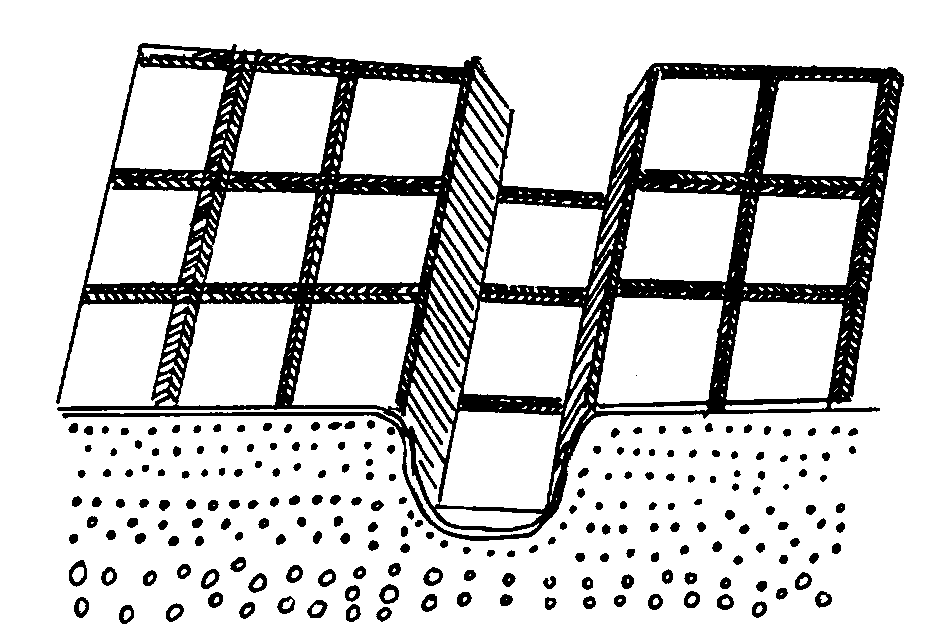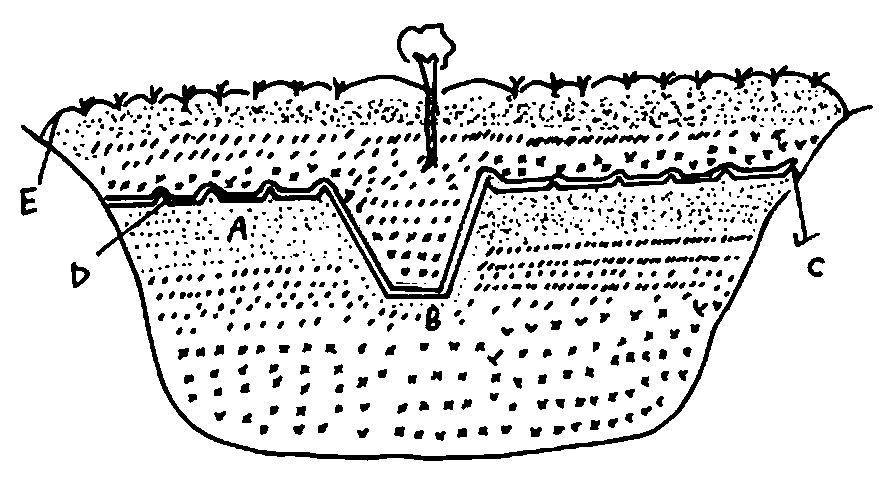Afforestation method applied to arid areas and semi-arid areas
A semi-arid and regional technology, applied in soil protection, protection devices, buildings, etc., can solve the problems of high cost, long cycle, low survival rate, etc., and achieve the effect of reducing costs
- Summary
- Abstract
- Description
- Claims
- Application Information
AI Technical Summary
Problems solved by technology
Method used
Image
Examples
Embodiment 1
[0040] A dry area in Xinjiang was selected as the base, and an excavator was used to excavate the soil, and then a pit of 50m×80m×5m (length×width×height) was formed. As attached to the manual image 3 As shown, the excavated soil is screened according to the particle size, and the sand with the largest particle size is piled at the bottom of the pit with a thickness of 0.5m; then coarse sand with a thickness of 0.2m (with a particle size of 5~10cm) and fine sand with a thickness of 0.2 (with a particle size of 2~5cm), among which 1.4m thick fine sand and soil are stacked in the shallow water area, and 0.2m thick fine sand is stacked in the deep water area. Then make 3m×3m×0.1m (length×width×height) soil ridge squares in the shallow water area on the soil; make 4m×5m×0.2m (length×width×height) squares in the deep water area on the soil ) of the soil ridge grid. Then the anti-seepage layer is laid on the soil ridges in the shallow water area and the deep water area, and the a...
Embodiment 2
[0042] A semi-arid area in Gansu was selected as the base, and an excavator was used to excavate the soil, and then a pit of 35m×60m×6m was formed. As attached to the manual image 3 As shown, sieve according to the particle size of the soil, and pile the sand with the largest particle size at the bottom of the pit with a thickness of 0.5m; once again pile up coarse sand with a thickness of about 0.4m (with a particle size of 4~ 8cm) and fine sand (2-4cm in particle size) and soil with a thickness of 0.2m. Among them, 1.5m thick soil is piled up in the shallow water area, and 0.3m thick soil is piled up in the deep water area. Then make 4m×5m×0.2m (length×width×height) soil ridge squares in the shallow water area on the soil; make 4.5m×4.5m×0.3m (length×width × high) soil ridge grid. Lay the anti-seepage layer on the soil ridges in the shallow water area and the deep water area, and also lay the anti-seepage layer on the slopes in the shallow water area and the deep water a...
PUM
 Login to View More
Login to View More Abstract
Description
Claims
Application Information
 Login to View More
Login to View More - R&D
- Intellectual Property
- Life Sciences
- Materials
- Tech Scout
- Unparalleled Data Quality
- Higher Quality Content
- 60% Fewer Hallucinations
Browse by: Latest US Patents, China's latest patents, Technical Efficacy Thesaurus, Application Domain, Technology Topic, Popular Technical Reports.
© 2025 PatSnap. All rights reserved.Legal|Privacy policy|Modern Slavery Act Transparency Statement|Sitemap|About US| Contact US: help@patsnap.com



